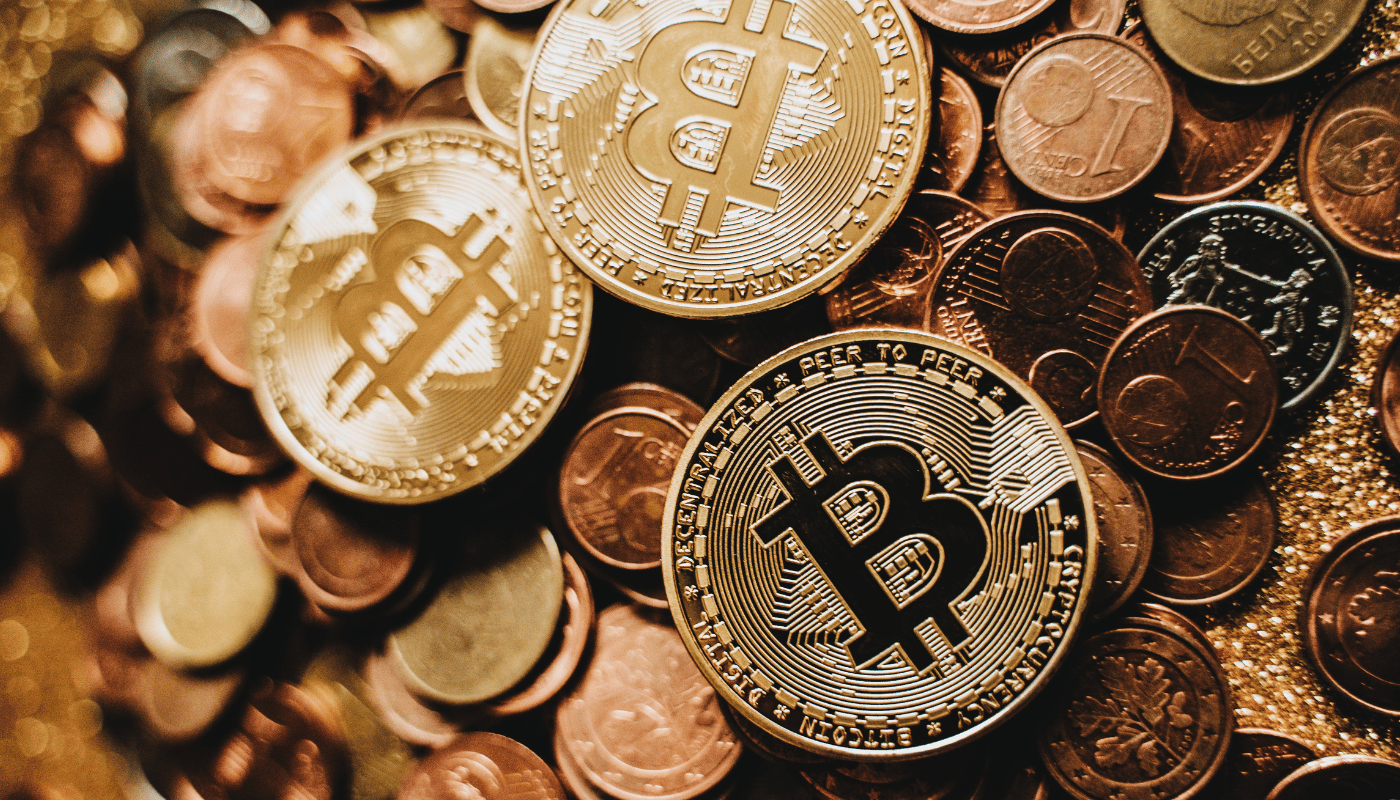Bitcoin’s Rise and the Evolution of Exchanges
Bitcoin’s rise to fame in late 2017 resulted in the rapid opening and expansion of exchanges worldwide, offering ways to enter and exit an underserved market that’s a global, round-the-clock, disconnected marketplace for a new and unconventional investment class.
Up until the cryptocurrency boom a little over two years ago, access was limited to select reputable exchanges, while many other venues were the target of major security breaches from hackers looking to steal from the exchange itself or its users. Due to these hacks, as well as Bitcoin’s pseudonymity, exchanges were being labelled as a primary concern for money-laundering activities by regulators placing trading venues squarely between a rock and a hard place. This deterred the development of the high-grade trading tools akin to those seen in traditional and established exchanges.
But the asset class has come a long way in the past few years as media buzzed with headlines of extreme gains within a low yield financial reality of conventional assets, such as stocks and bonds.
Beyond price, Bitcoin has also been able to shed the negative halo around it and is now being closely observed for its intended purpose as a Store-of-Value (SoV) asset and means of payment. Both these characteristics, however, are facing an uphill battle as volatility hampers the attraction of a larger non-trading audience.
The payments use case has yet to find much appetite.
Bitcoin, as it stands, is no longer being voiced as a primary payments tool by the community, but as a replacement for gold in a digital format. In 2019, a huge marketing campaign was launched by Grayscale, a New York-based cryptocurrency asset fund manager advising people to “drop gold” from their portfolios and replace it with Bitcoin.
Regardless of the ideological position one might take for the ultimate use case for the cryptocurrency, what has become evident is that Bitcoin has gained investment opportunity prominence.
This can be seen by the further establishment of regulator-approved products on institutional venues, marking its legitimate appearance on the trading stage. Legacy and new cryptocurrency exchanges have also had to adhere to a strict application of regulatory requirements, security tightening and even insurance coverage. This in turn has eased regulatory approval for derivative products, ranging from cash and physically settled futures to Exchange Traded Products (ETP).
But despite the advancement seen recently, problems of liquidity are apparent. High volatility rates have resulted in the deterioration of the trust that the cryptocurrency can act as a reliable SoV, though investors have found the opportunity plentiful.
This high volatility points only in the direction of liquidity, or lack thereof. As a result, Bitcoin, despite massive growth in trading activity, continues to see extreme price swings in both directions as trading venue liquidity gets squeezed.
This report will examine the multiple aspects affecting price discovery, market development, and the relationship between volatility and liquidity based on trading volumes across regulated and reputable exchanges under a macro and micro lens.
Number of Exchanges Launched
Bitcoin Exchange Venues & Products
Only a handful of exchanges had gained a trustworthy status before 2017. The sector, lacking understanding of the asset as well as an abundance of mainstream media obituaries for Bitcoin, had branded it as a high-risk investment opportunity. The attention grew, however, as Bitcoin breached the $1000 mark in 2017, recovering several times from downward spirals.
Nearly 40% of exchanges that came online to serve the cryptocurrency trading communities started in 2017 (see chart 1). The market now serves over 10,000 market trading pairs globally. This has been the result of massive interest in an asset class that showed promising return opportunities for those who dared to enter a market not yet mature in infrastructure, security, and regulations.
While spot markets remain a prominent part of the industry, institutional products and derivative venues for high-frequency traders have begun to pick up even more speed.
Institutional Bitcoin products are being released, primarily in advanced markets (see table 1). In fact, trading volume on cash-settled futures has dwarfed global spot market volumes, highlighting the growing demand from deep pockets who want to partake in what remains a rather erratic asset class.
Over-the-Counter (OTC) markets are being established by reputable firms, and more sophisticated products from futures to options are coming to the fore (see table 2).
Price Discovery
While cryptocurrency markets are plentiful today, Bitcoin is indeed the most traded on global exchanges of all the cryptocurrencies. But, up until recently, the decentralized nature of markets and round-the-clock trading had made price discovery much more complicated, data analysis shows.
Major differences can be seen between exchanges within the past few years, but the gap in price discovery from a bird’s-eye lens shows that markets are becoming more efficient in price discovery across markets (see chart). When comparing price differences for Coinbase versus Bitstamp, the gap now averages under 0.25% in 2019 between the daily highs. These price difference averages stood at almost double in previous years.
Chart 2: Monthly Avg. % Difference in BTC/USD Price on Coinbase vs Bitstamp (Daily High) [2]
Monthly Avg. % Difference
In 2019, the price difference on days that experienced upwards of 20% from the low price to the high price saw a gap difference across exchanges all under 0.9%. In 2018, arbitrage gaps during extreme volatility reached 7%, and in 2017 as high as 15.5% (see table).
The daily outlook of arbitrage opportunities shows, at least seemingly, the potential of a vast range. In the past three years, 2017-2019, Bitcoin’s price peaked from its low by a 10% upswing a fifth of the time.
But these opportunities have become tighter (see chart). In 2017, for example, 27% of the year saw price swings north of 10%. The number of days that a price swing was larger than 10% in 2019 was less than half that at 12.6% of the year.
Still, for an asset class that aims to displace gold as the new “gold standard,” Bitcoin’s volatility makes for a difficult SoV in comparison. A look at daily arbitrage lows and highs of gold in 2019 shows that during 92% of the year, prices saw less than a 2% daily change. In 2019, Bitcoin saw price swings of less than 2% on only 47 days (less than 13% of the year). Gold’s peak volatility was well below 4%.
Market Maturity and Volatility Asymmetry
Multiple elements have become much more efficient in cryptocurrency markets. More cryptocurrency exchanges have opened worldwide under regulated supervision. Over-the-Counter markets have developed. Derivative exchanges are becoming more sophisticated. Institutional products are being listed in the US and Europe. Liquidity grows, spreads are lower than earlier.
But, despite the many various trading products on the market, volatility remains very high for an asset class that claims to have store-of-value status (see chart). This begs the question: why does volatility remain high in a market that has established itself on the global stage, with volumes skyrocketing across multiple trading products?
Trading Volume Under the Microscope
Trading volume data analysis under a fine comb reveals that these huge price swings are actually a small representation of the actual total on any given day that experience high price volatility.
On a wide-angle lens, numbers can be extremely deceiving. For example, the most recent large price swing of over 20% from low to high happened on 26 October 2019. On Coinbase alone, nearly $430 million (over 45k Bitcoins) was traded in BTC/USD. In comparison to the least volatile day of the year on 31 March 2019, the very same exchange traded less than $13 million (3K Bitcoins worth) (see table).
2019: Top 10 Lowest Volatility Days on Coinbase
| Date | Arb % | Volume |
|---|---|---|
| 31/03/2019 | 0.6 | 3,140 |
| 28/03/2019 | 0.8 | 4,867 |
| 5/2/2019 | 0.9 | 6,385 |
| 22/03/2019 | 0.9 | 5,137 |
| 24/03/2019 | 0.9 | 2,700 |
| 23/03/2019 | 0.9 | 4,145 |
| 7/2/2019 | 0.9 | 8,614 |
| 26/03/2019 | 1.1 | 4,279 |
| 15/09/2019 | 1.1 | 2,745 |
| 13/03/2019 | 1.1 | 5,690 |
2019: Top 10 Highest Volatility Days on Coinbase
| Volume | Arb % | Date |
|---|---|---|
| 77,276 | 29.7 | 27/06/2019 |
| 38,407 | 23.9 | 2/4/2019 |
| 82,214 | 22.2 | 26/06/2019 |
| 45,491 | 21.9 | 26/10/2019 |
| 47,367 | 20.3 | 17/05/2019 |
| 38,721 | 19.8 | 24/09/2019 |
| 47,236 | 19.4 | 13/05/2019 |
| 30,415 | 17.9 | 22/10/2019 |
| 54,168 | 16.8 | 29/05/2019 |
| 28,342 | 16.5 | 25/08/2019 |
What the volume analysis reveals is that trading volumes have a significant relationship with price movements, and as liquidity increases so do the complexities of how price discovery occurs.
Conclusion
In summary, while Bitcoin has made significant strides towards maturity as a legitimate investment asset, the interplay between liquidity and volatility remains a critical challenge. The rapid expansion of exchanges and derivative products has certainly enhanced trading opportunities, yet the underlying liquidity issues persist, leading to significant price swings that can deter broader adoption as a Store-of-Value asset. As the market continues to evolve, efforts to improve liquidity—through better regulatory frameworks, enhanced trading technologies, and more robust institutional participation—will be essential. Addressing these challenges not only holds the key to stabilizing Bitcoin’s price but also paves the way for it to fulfill its potential as a viable alternative to traditional investment vehicles like gold.

